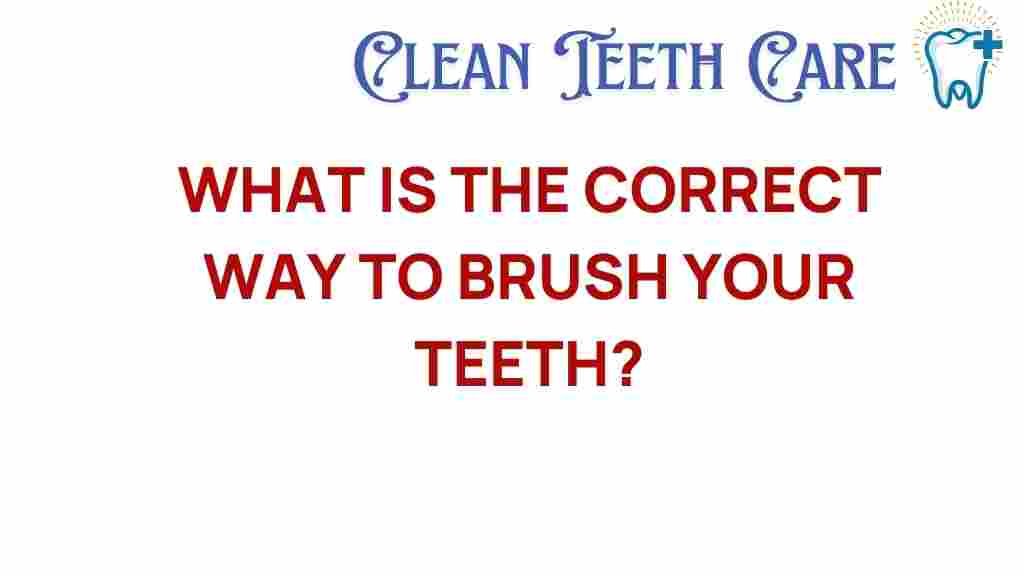Mastering the Art of Toothbrushing: Are You Doing It Right?
Toothbrushing is a fundamental aspect of dental hygiene that plays a crucial role in maintaining oral health. Many people think they know how to brush their teeth properly, but a surprising number may not be doing it right. This can lead to plaque buildup, cavities, and other dental issues. In this article, we’ll explore the best brushing techniques, the importance of plaque removal, and tips for children’s dental care, ensuring you have all the information you need for optimal oral health.
The Importance of Toothbrushing
Toothbrushing is essential for several reasons:
- Prevention of Cavities: Regular brushing helps remove food particles and plaque, which can lead to tooth decay.
- Gum Health: Proper brushing reduces the risk of gum disease.
- Fresh Breath: Brushing helps eliminate bad breath caused by bacteria in the mouth.
- Overall Health: Good oral hygiene is linked to better overall health, reducing the risk of certain diseases.
Brushing Technique: How to Brush Your Teeth Correctly
Mastering the technique of toothbrushing is vital for effective dental hygiene. Follow these steps for optimal brushing:
- Choose the Right Toothbrush: Select a toothbrush with soft bristles. Hard bristles can damage your gums and enamel. Consider your needs: electric or manual toothbrushes can both be effective.
- Use the Right Toothpaste: Use fluoride toothpaste to help strengthen tooth enamel and prevent cavities.
- Position Your Toothbrush: Hold your toothbrush at a 45-degree angle to your gums. This angle helps the bristles reach below the gum line.
- Brush Gently: Use gentle, circular motions to clean your teeth. Avoid aggressive scrubbing, which can harm your enamel and gums.
- Cover All Surfaces: Brush the outer surfaces, inner surfaces, and chewing surfaces of your teeth. Don’t forget to clean your tongue, where bacteria can accumulate.
- Brush for Two Minutes: Aim to brush for at least two minutes, ensuring you spend adequate time on each quadrant of your mouth.
- Rinse Thoroughly: After brushing, rinse your mouth with water to remove any residual toothpaste and debris.
Understanding Plaque Removal
Plaque is a sticky film of bacteria that forms on your teeth. If not removed through regular toothbrushing, it can harden into tartar, leading to more serious dental problems. Here’s why effective plaque removal is crucial:
- Prevents Cavities: Plaque produces acids that can erode tooth enamel, leading to cavities.
- Reduces Gum Disease Risk: Plaque buildup can cause inflammation of the gums, known as gingivitis, which can progress to more severe periodontal disease.
- Minimizes Bad Breath: Bacteria in plaque can lead to persistent bad breath.
Toothbrush Types: Which One is Right for You?
Choosing the right toothbrush is crucial for effective toothbrushing. Here are the main types:
- Manual Toothbrush: Affordable and accessible, manual toothbrushes are effective when used correctly.
- Electric Toothbrush: Often more effective than manual brushes, electric toothbrushes can reduce plaque and gingivitis more effectively due to their oscillating or rotating bristle heads.
- Interdental Brushes: These are useful for cleaning between teeth where a regular toothbrush might not reach.
- Children’s Toothbrushes: Designed specifically for smaller mouths, these toothbrushes often feature softer bristles and fun designs to encourage kids to brush.
Children’s Dental Care: Starting Them Early
Establishing good dental hygiene habits early in life is critical for children’s oral health. Here are some tips for effective children’s dental care:
- Start Early: Begin brushing as soon as the first tooth appears.
- Use Fluoride Toothpaste: For children aged 2-5, use a small smear of fluoride toothpaste. For children over 5, a pea-sized amount is recommended.
- Make It Fun: Use songs or timers to make brushing enjoyable for kids.
- Lead by Example: Brush your teeth alongside your child to model good dental hygiene.
- Regular Dentist Visits: Schedule regular check-ups to ensure your child’s teeth are healthy.
Dentist Tips for Effective Toothbrushing
Here are some expert dentist tips to enhance your toothbrushing routine:
- Change Your Toothbrush Regularly: Replace your toothbrush every three to four months, or sooner if the bristles are frayed.
- Don’t Rush: Take your time while brushing to ensure every area is cleaned properly.
- Consider Mouthwash: Using an antibacterial mouthwash can add an extra layer of protection against plaque and bacteria.
- Floss Daily: Incorporate flossing into your routine to remove plaque and food particles from between teeth.
Troubleshooting Common Brushing Issues
If you’re still facing challenges with your toothbrushing routine, consider these troubleshooting tips:
- Bleeding Gums: If your gums bleed when brushing, you may be brushing too hard or have gum disease. Consult your dentist.
- Bad Breath Persists: If bad breath continues despite regular brushing, consider dietary factors or dental issues. A visit to the dentist may be necessary.
- Tooth Sensitivity: If you experience sensitivity, switch to a toothpaste designed for sensitive teeth and consult your dentist.
Conclusion
Mastering the art of toothbrushing is essential for maintaining good dental hygiene and ensuring optimal oral health. By understanding proper brushing techniques, selecting the right toothbrush, and following expert tips, you can effectively remove plaque and prevent dental issues. Remember that children’s dental care is just as important, and instilling good habits early can lead to a lifetime of healthy smiles.
For more information on maintaining excellent oral hygiene, visit our dental health resource page. Additionally, for professional dental advice, check out the American Dental Association.
This article is in the category Hygiene and created by CleanTeethCare Team
